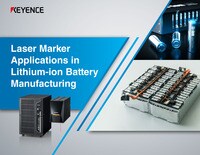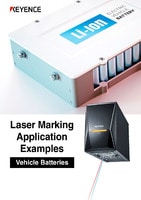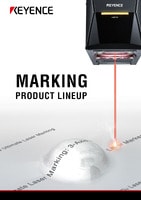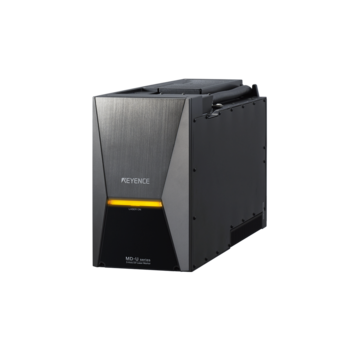Industrial Laser Marking Systems / Laser Markers
Laser Marking and Cleaning Electric Vehicle Batteries
-
Tags:
- Battery , Automotive , Metal
In the past five years, automotive companies like GM, Hyundai, and Honda recalled hundreds of thousands of electric vehicles because of defective batteries. These defective batteries brought forth a risk of fires and stalled vehicles, so they were immediately pulled from sale. As a result, these companies lost billions of dollars in revenue and a tarnished reputation.
What would have happened if they weren’t inspecting the batteries? Or if there was no way to trace the batteries to the manufacturer?
This situation is a prime example of the necessity of battery cleaning and marking. Laser cleaning electric vehicle batteries ensure conductivity, productivity, and battery efficiency. Laser marking electric vehicle batteries upholds traceability and identification for quick and effective recall.
Together, laser cleaning electric vehicle batteries and laser marking electric vehicle batteries uphold quality and assurance. Although there are alternative methods like shot blasting, chemical etching, and scrubbing, lasers outperform them with a laser-focused, speedy, and non-intrusive process.
Why is Laser Marking and Cleaning Beneficial for Electric Vehicle Batteries?
Cleaning and marking are necessary for batteries, but why do lasers have the upper hand in these processing methods? Let’s take a look at some of the benefits it provides.
Lasers are Non-Intrusive
Whether you’re laser cleaning electric vehicle batteries or marking, there’s no risk of harming the internal circuit of the battery. Lasers can mark or clean electrodes, anode foils, and cases without any disruption to the makeup.
However, alternative methods like shot blasting, chemical etching/cleaning, and scrubbing add force. Forceful cleaning and marking increase the possibility of a defective battery.
Lasers are Precise
There’s a reason why the saying “laser-focused” exists.
Lasers have precise beams that hit the exact target without treading into other areas. The thin and flexible beam targets the crevices and curves of a battery. Other marking and cleaning methods cannot reach the same level of precision and may not clean or mark as accurately.
Lasers are Environmentally Friendly
EVs are famous for being environmentally friendly, and laser cleaning and marking follow suit. Laser marking and cleaning does not use consumables or emit chemical toxins.
Lasers Improve Bonding Strength
With batteries, stronger bonds lead to greater longevity and performance. Laser Cleaning is a process that is used to facilitate stronger bonds for battery manufacturers. The laser beam ablates the target prepping the surface with optimal bonding conditions.
We’re here to provide you with more details.
Reach out today!

What are The Benefits of Laser Cleaning Battery Cells?
Battery cells go into a manufacturing supply chain through different plants, machines, and environments. With all the exposure, battery cells will inevitably get contaminated with dirt, grease, and oil.
Contaminated battery cells decrease energy efficiency, lifespan, and productivity. These contaminants are harmful to the battery and the vehicle if not cleaned.
Prevents Recalls
As we’ve seen with the massive recalls in the past few years, contaminated batteries are recalled immediately because of the life-threatening effect they can have on a vehicle.
The speed, precision, and non-intrusive laser cleaning process produces uncontaminated battery cells that likely won’t be cause for recall. Preventing battery recalls ensures that you aren’t losing money from unused materials or remanufacturing a battery.
Efficient
Laser cleaning batteries is exponentially faster than their alternatives while simultaneously removing more contaminants. Lasers complete cleaning in a few seconds. Incorporating laser cleaning for battery cells moves batteries down the line faster and gets them to buyers quicker.
It also allows you to scale your business and process more battery cells for a lower price.
Improves Surface Area
Batteries are formed with welding. But welding is susceptible to processing issues like burrs and excessive pores. These defects affect weld strength and productivity of a battery and can result in a recall.
Laser cleaning electric vehicle batteries improves the welding by cleaning burrs and pores. In turn, the battery’s conductivity and efficiency improve.
Discover more about this product.
Click here to book your demo.

What Laser Battery Cleaning System Should be Used for Electric Vehicles?
Electric vehicle batteries are made of lightweight materials like aluminium, lithium, and nickel. Because of the materials, using a UV or hybrid laser system is best for effective cleaning.
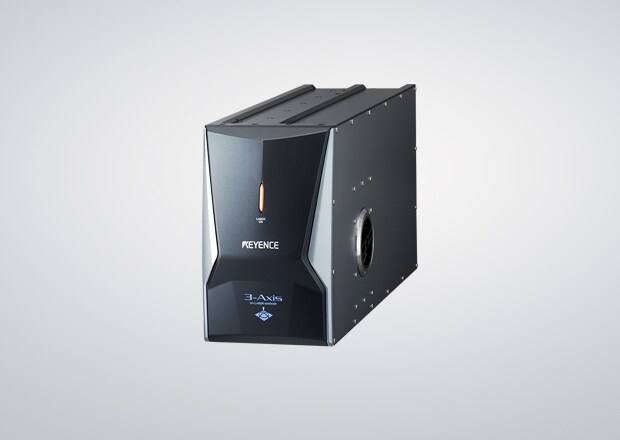
UV Laser
UV lasers have absorption rates higher than other lasers. These lasers use a tactic called “cold marking”, which can mark or clean materials with little to no heat stress.
UV lasers also have a wavelength that is ⅓ of the lenght of a standard wavelength. This shorter wavelength generates a smaller beam spot and allows the UV laser to mark more precise and targeted areas without the concern of marking things that shouldn't be.
KEYENCE recommends the 3-Axis MD-U Laser Marking Machine for cleaning battery cells.
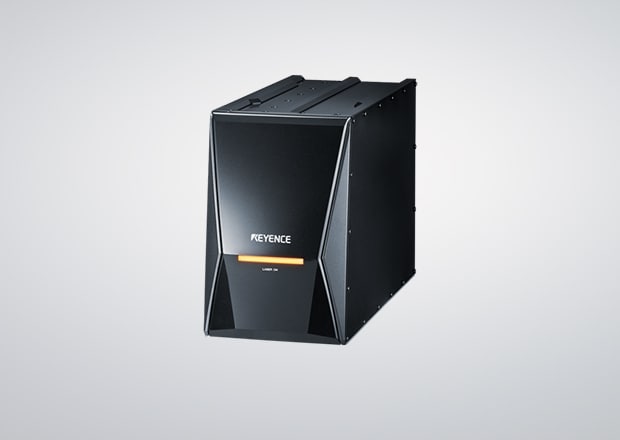
Hybrid Laser
Hybrid lasers have higher power and service longevity but utilise a short pulse duration. The short pulse duration allows hybrid lasers to also mark and clean with minimal heat effect. For a hybrid laser, KEYENCE recommends the 3-Axis MD-X Laser Marking Machine.
Get detailed information on our products by downloading our catalogue.
View Catalogue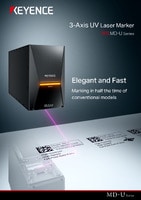

What Types of EV Batteries Can be Laser Cleaned?
Lasers clean all batteries: prismatic, cylindrical, and pouch. They can also clean any lithium alloy. That being said, your alloy may work better with a UV laser or a hybrid laser.
What are the Benefits of Laser Battery Tray Marking?
Battery trays are the backbone of EVs and an integral support system for the battery cells. The battery tray seals the cells into the vehicle and protects the cells from contaminants and damage. It also absorbs energy in a crash to prevent damage to the driver and vehicle.
Every part and component of an EV needs traceability, and a battery tray is no exception. Lasers are ideal for battery tray marking.
Laser marking electric vehicle batteries are high contrast and permanent, so the process keeps up with the industrial strength of a battery tray. A laser marking machine designs 2D codes or serial numbers that are read by humans and machines for insertion into databases. The traceability marks improve recall processes, assembly, and counterfeit prevention.
Curious about our pricing?
Click here to find out more.

What are the Benefits of Laser Marking EV drive Units?
EV drive units consist of three parts: power electronics, gearbox, and electric motor. The drive unit is how the EV converts the battery energy into motion.
Since the EV drive unit is one “unit” with separate parts, it requires traceability on each part. Like marking battery trays, traceability on each part makes sure that the part is easily traced back to its manufacturer. Laser traceability marks allow for isolating the defect to one part.
Discover more about this product.
Click here to book your demo.

Adding Laser Marking and Cleaning to Your Shop Floor
Laser marking and cleaning are precise, environmentally friendly, and efficient processes that improve battery cells and the EV industry. It upholds high standards for compliance and functionality. Together, these produce battery cells that drivers trust will keep them safe.
At KEYENCE, we specialise in industry-leading marking machines. Our technology and machines for laser marking electric vehicle batteries are different from the rest. We offer specialised 3-axis technology for automated precision on complex shapes of EV drive units, batteries, and battery trays.
Our industry and machine experts will help you decide the best laser marking machine for your shop floor. If you want to learn more about the process of adding a laser marking machine, contact us today.
We’re here to provide you with more details.
Reach out today!


![Laser marker (Electric Vehicle) applications [Electric motor edition]](/img/asset/AS_103531_L.jpg)
